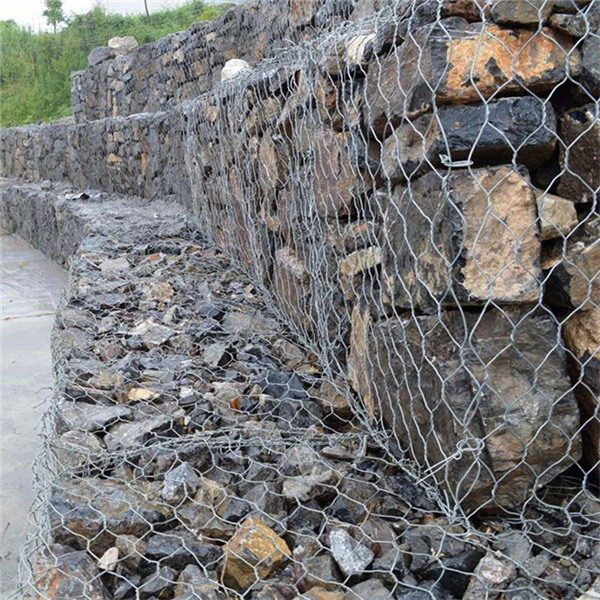Okt . 21, 2024 20:12 Back to list
Optimal Gabion Wire Mesh Size for Effective Use and Durability
The Best Gabion Wire Mesh Size A Comprehensive Guide
Gabion structures have gained popularity in civil engineering due to their versatility and strength. They are often used for erosion control, retaining walls, sound barriers, and many other applications in landscaping and construction. The effectiveness of a gabion structure largely depends on the choice of materials, among which the wire mesh size plays a crucial role. In this article, we will explore the best gabion wire mesh size and its implications on the durability and functionality of gabion systems.
What is Gabion Wire Mesh?
Gabion wire mesh is a type of fencing that is specifically designed for constructing gabions—cages filled with rocks, stones, or other materials. The wire mesh is typically made from galvanized steel or PVC-coated steel to enhance its corrosion resistance. This protective coating is essential, especially for outdoor applications where exposure to moisture and varying weather conditions can lead to rust and deterioration over time.
Importance of Wire Mesh Size
The size of the wire mesh in gabion construction significantly affects the integrity and performance of the structure. A well-chosen mesh size contributes to the overall stability of the gabion, the ease of filling, and the longevity of the installation. Typically, gabion wire mesh is categorized by its aperture size—the size of the holes in the mesh, which can vary widely.
Recommended Wire Mesh Sizes
1. Small Aperture (50 mm x 50 mm / 2” x 2”) This size is ideal for applications where finer materials are used, such as gravel or smaller stones. It provides sufficient support while preventing smaller fill materials from escaping. This mesh size is often used in decorative gabions, where aesthetics are essential.
2. Medium Aperture (75 mm x 75 mm / 3” x 3”) A medium-sized mesh is the most commonly used in standard gabion applications. It allows for a balanced approach, providing good structural strength while accommodating a variety of stone sizes. This size is commonly used for retaining walls, effective for both load-bearing applications and erosion control.
best gabion wire mesh size

3. Large Aperture (100 mm x 100 mm / 4” x 4”) For applications dealing with larger boulders or rocks, a larger mesh size is suitable. It allows for easy placement of stones and promotes quick draining of water, making it a choice for riverbank stabilization and large-scale construction projects. However, care must be taken to ensure that the stones used are appropriate for the size of the mesh, as larger apertures might allow smaller stones to wash out over time.
Factors Influencing Mesh Size Selection
When selecting the best gabion wire mesh size, several factors should be taken into consideration
- Geographic Location In areas prone to heavy rainfall or erosion, a finer mesh size might be appropriate to prevent smaller particles from washing away. Conversely, in regions where larger rocks are readily available, a larger mesh size may be beneficial.
- Purpose of the Gabion Understanding the intended use of the gabion structure, whether for aesthetic purposes, environmental protection, or functional barriers, will guide the choice of wire mesh size.
- Local Regulations Often, local building codes may specify certain requirements for mesh sizes based on intended applications, particularly in public works.
Conclusion
Choosing the best gabion wire mesh size is crucial to ensure the durability and effectiveness of gabion structures. By considering various factors—such as geographic conditions, intended use, and local regulations—you can make a well-informed decision that meets your specific needs. With the right wire mesh size, gabion constructions can provide long-lasting solutions to various engineering challenges, all while maintaining aesthetics and functionality in their environment. Whether you are a professional in the field or a DIY enthusiast, understanding the intricacies of gabion wire mesh will empower you to create resilient structures that withstand the test of time.
-
Why PVC Coated Gabion Mattress Is the Best Solution for Long-Term Erosion Control
NewsMay.23,2025
-
Gabion Wire Mesh: The Reinforced Solution for Modern Construction and Landscape Design
NewsMay.23,2025
-
Gabion Wall: The Flexible, Seismic-Resistant Solution for Modern Landscaping and Construction
NewsMay.23,2025
-
Gabion Wall Solutions: The Durable, Decorative, and Affordable Choice for Every Landscape
NewsMay.23,2025
-
Gabion Basket: The Durable and Flexible Alternative to Traditional Retaining Walls
NewsMay.23,2025
-
Gabion Basket: The Proven Solution for Slope Stability and Flood Control
NewsMay.23,2025
-
Versatility of Chain Link Fence Gabion
NewsMay.13,2025






